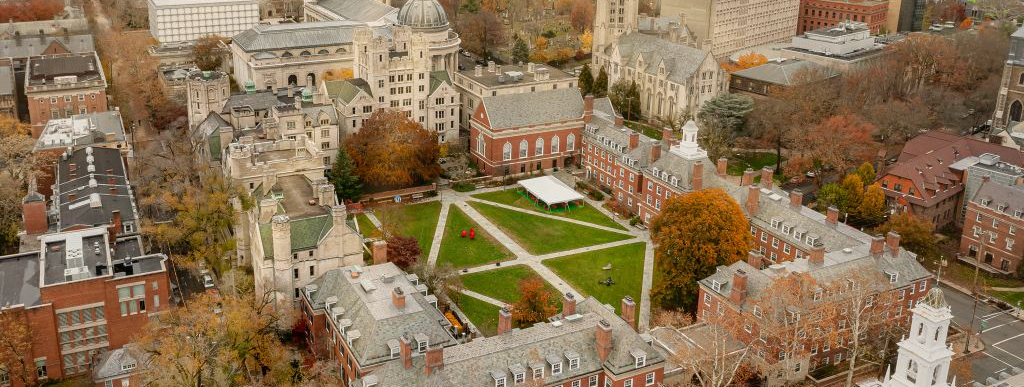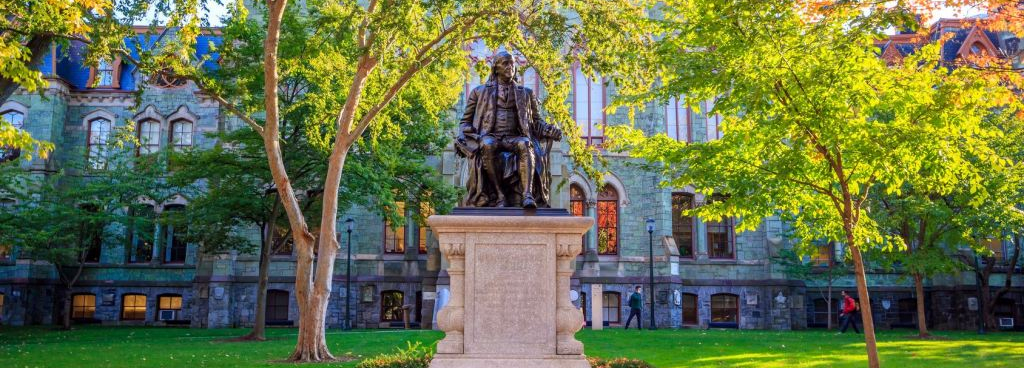One is on the East Coast, the other on the West Coast. Both have the industrious beaver as their mascot. The Massachusetts Institute of Technology and the California Institute of Technology are both scientific and technological titans and world leaders in cutting-edge research and innovation. Let’s explore the distinctive features of MIT and Caltech, so you can decide which college is right for you.
Is There a Rivalry Between MIT and Caltech?
While no heated rivalry exists between the two institutions, there is certainly a competitive atmosphere. Both Caltech and MIT are elite private universities focused on science and technology, which puts them in similar academic spheres. This has naturally led to a friendly rivalry in terms of their research and the advancements they make in STEM fields. Additionally, the schools have a history of playing elaborate pranks on each other, which are all in good fun.
Is Caltech Better than Harvard?
Whether Caltech is “better” than Harvard University depends on individual preferences, academic goals, and the specific field of study. If you are interested in a specialized focus on science and technology, Caltech might be more suitable. However, if you seek a broader range of academic disciplines and a more well-rounded education, Harvard could be a better fit. Both institutions are highly regarded, and the choice often depends on which one better aligns with your academic and professional goals. You may also want to consider location, student life, campus size, and other factors that can affect your college experience.
Read our guide on how to get into Harvard.
Why Is Caltech So Prestigious?
Caltech consistently ranks among the top institutions globally in science and technology, attracting top-tier faculty and students. Faculty and researchers from Caltech have been involved in significant discoveries and advancements, contributing to its reputation for cutting-edge research. The institution has also produced 46 Nobel laureates among its faculty and alumni, among numerous other awards and prizes.
Additionally, NASA entrusts Caltech to manage the Jet Propulsion Laboratory, which sends probes into space to explore the solar system. Caltech is also known for its Seismological Laboratory and numerous astronomical observatories.
Is Caltech an Ivy League Level?
Caltech is often considered on par with Ivy League schools in terms of academic excellence and prestige. It is a top-ranked university that is frequently listed alongside or even above Ivy League schools in various national and international university rankings. In addition to its global reputation in science and technology, Caltech’s small size, accomplished faculty, low student-to-faculty ratio, and emphasis on personalized education contribute to its standing among elite colleges and universities.
Caltech vs MIT: Which One Is Better?
The question of whether Caltech or MIT is “better” depends on your academic goals and what you hope to get out of your college experience in general. Aside from considering the strength of their academic programs and opportunities, research each school’s campus culture, admission requirements, student clubs and activities, and career outcomes.
Learn how to get into MIT.
Academic Programs and Majors
Caltech offers 28 rigorous undergraduate programs — what they refer to as “options.” As you might expect, most of these programs are related to STEM disciplines, though Caltech also offers business and humanities programs like economics, English, philosophy, and history. All undergraduate students must complete a core curriculum, which consists of advanced courses in the social sciences, humanities, and sciences. The core curriculum is designed to strengthen critical thinking, communication, and problem-solving skills. Caltech is particularly strong in physics and astronomy as well as other science subjects, making it a good choice for students interested in pursuing those fields.
MIT offers a broader range of academic programs, including architecture and more majors in the humanities, arts, and social sciences. Undergraduates can also enroll in a program at the MIT Sloan School of Management that combines business perspectives with students’ scientific and technological expertise. Prospective students interested in engineering or computing disciplines will find particularly strong programs at MIT. The core curriculum — what MIT refers to as General Institute Requirements (GIRs) — provides students with an interdisciplinary foundation that complements their choice of major.
Faculty and Research Opportunities
Caltech, known for its distinguished faculty, has attracted numerous renowned scientists and researchers across various disciplines:
- A Nobel laureate in physics (2017), Kip Thorne is known for his contributions to the detection of gravitational waves. His work has significantly advanced the field of astrophysics. He taught at Caltech until 2009.
- A Nobel laureate in chemistry (2018), Frances Arnold is recognized for her pioneering work in directed evolution of enzymes, with applications in biotechnology. She currently teaches at Caltech.
- Although he passed away in 1988, Richard Feynman was a legendary physicist and Nobel laureate known for his contributions to quantum mechanics. His influence continues to resonate at Caltech.
- A theoretical physicist known for his work in quantum information science, John Preskill is a prominent faculty member at Caltech and has played a significant role in the development of quantum computing.
- A molecular biologist, Barbara Wold has made substantial contributions to the understanding of gene regulation and RNA biology. She is a current faculty member at Caltech.
- An astronomer known for his discovery of Eris, a distant dwarf planet, Michael Brown has contributed to the study of the outer solar system. He is a professor of planetary astronomy at Caltech.
Research is an expectation at Caltech, and 90% of undergraduates engage in research projects. The student-to-faculty ratio of 3:1 means that students can work closely with faculty and postdoctoral scholars. Students can choose from a variety of undergraduate research programs and have access to more than 50 research centers and institutes.
MIT has a renowned faculty that has made significant contributions to various fields:
- A prominent linguist, philosopher, cognitive scientist, historian, and social critic, Noam Chomsky has been a long-time faculty member at MIT. His work has had a profound impact on linguistics and cognitive science.
- A bioengineer and chemical engineer, Robert Langer is known for his pioneering work in drug delivery systems and tissue engineering.
- The inventor of the World Wide Web, Sir Timothy Berners-Lee is a professor at MIT. His contributions to information technology have transformed the way we communicate and access information.
- A computer scientist and mathematician, Shafi Goldwasser has made significant contributions to cryptography and complexity theory. She is a recipient of the Turing Award.
- A physicist and electrical engineer, Mildred Dresselhaus made pioneering contributions to the study of carbon-based materials, earning her the nickname “Queen of Carbon.” The MIT professor passed away in 2017.
- A geneticist and molecular biologist, Eric Lander has played a key role in the Human Genome Project and has been influential in genomics research.
- A neuroscientist and the first female president of MIT, Susan Hockfield has been a prominent figure in science and academia.
Students at MIT can participate in groundbreaking research, working closely with faculty and researchers at any of the institute’s numerous labs and centers. Additionally, students benefit from an entrepreneurial culture and resources that can help them bring their innovations to market.
Campus Culture and Student Life
The campus culture at Caltech is characterized by a unique blend of academic intensity, collaboration, and a close-knit environment. With a student body of only 1,000 undergraduates and 1,400 graduate students, Caltech is a small institution that prides itself on accomplishing big things. Residential life on campus is a social and supportive environment, where undergraduates of all years mingle in the eight smaller house communities or the larger residence halls.
Caltech students, known as “Techers,” can find a variety of clubs, activities, and events that contribute to their overall college experience, including varsity sports, recreation, performing and visual arts, lectures, and more. The student-run Caltech Y is a non-profit organization that helps students become better global citizens through a variety of leadership, service, adventure, and civic engagement activities.
Academic rigor, innovation, and a vibrant, diverse community define the campus culture at MIT. IvyWise counselor Katie, a former Senior Assistant Director of admissions at MIT, describes students there as having an “insane passion for doing whatever it is that they’re interested in.” The institution encourages students to pursue creative projects, start businesses, and engage in technological innovation. The MIT culture has contributed to the development of numerous successful startups and innovations. As for residential life, undergraduate students can choose from 11 residence halls, each with its own distinct community.
MIT is known for its “hacking” culture, where students engage in clever and creative pranks and projects. The Great Dome on campus is a popular site for these hacks, which are considered a tradition and a form of creative expression. In their free time, MIT students can participate in one or more of the 450+ clubs and organizations on campus, as well as varsity sports.
Listen to our Just Admit It! podcast: What is MIT like?
Admission and Selectivity
Over the past few years, Caltech’s admission rate has been below 5%. Students hoping to attend Caltech must demonstrate that they are being challenged academically and have a willingness to explore and take risks intellectually. Faculty review applications of the most competitive students, so it’s important to focus on STEM in the supplemental essays as much as possible. Caltech requires test scores for fall 2025 admissions after being test-blind since 2020. Students admitted to Caltech typically graduate in the top 10% of their high school class — Caltech does not report the high school GPAs of its admitted students, but you should strive for the highest GPA possible. Recommendations, strength of character, and extracurricular activities are also important factors.
Like Caltech, MIT also has an admission rate below 5%. While competitive applicants perform well academically and have a record of increasingly rigorous courses, MIT focuses on holistic admissions to ensure students are a good fit for the campus culture. This means that the student’s personal qualities, talents, and extracurricular involvements are also important factors in their admissions decisions. MIT requires students to submit standardized test scores. The middle 50% of admitted students for fall 2022 scored 1520-1570 on their SATs and 35-36 on their ACTs. While MIT does not report the high school GPAs of its admitted students, it can be helpful to know that of the students who reported their class rank, 97% graduated in the top 10% of their class.
Alumni and Career Opportunities
Caltech has produced a notable group of alumni who have made significant contributions to various fields, including science, technology, academia, and entrepreneurship.
- A highly influential chemist and peace activist, Linus Pauling (Ph.D. 1925) was awarded the Nobel Prize in Chemistry for his research on the chemical bond. He later received the Nobel Peace Prize for his efforts against nuclear weapons testing.
- An acclaimed film director, Frank Capra (B.S. 1918) is best known for directing classic films such as “It’s a Wonderful Life” and “Mr. Smith Goes to Washington.”
- Donald Knuth (Ph.D. 1963) is a computer scientist, mathematician, professor emeritus at Stanford University, and 1974 Turing Award recipient. He is best known for his work on algorithms, typesetting, and the creation of the TeX typesetting system.
- Co-founder of Intel Corporation and author of Moore’s Law, Gordon Moore (Ph.D. 1954) is a pioneer in the semiconductor industry.
- A pioneering AIDS researcher, Dr. David Ho (B.S. 1974) played a key role in the development of antiretroviral therapy for HIV/AIDS.
- Astrophysicist and UCLA professor, Andrea Ghez (Ph.D. 1992) was awarded the Nobel Prize in Physics in 2020 for discovering a supermassive black hole at the center of the Milky Way.
The career outcomes for Caltech graduates span various sectors, including academia, industry, research, and entrepreneurship — the possibilities are endless. Many Caltech graduates choose to pursue careers in academia, becoming professors and researchers at universities and research institutions. They are also in high demand in industries such as technology, aerospace, biotechnology, and finance. You can also find Caltech graduates in government and national laboratories, finance and consulting firms, technology, pharmaceutical companies, and more.
As expected, MIT also has many notable alumni, some of whom are also affiliated with Caltech, such as Andrea Ghez and Richard Feynman. These alumni have made significant contributions in various fields.
- Apollo 11 astronaut Buzz Aldrin (Ph.D. 1963) was the second person to walk on the moon.
- Kofi Annan (M.S. 1972) was the seventh Secretary-General of the United Nations and a Nobel Peace Prize laureate.
- Educator Salman Khan (B.S., M.S. 1998) is the founder of Khan Academy, an online education platform that offers free courses to millions of learners worldwide.
- The first African American woman to earn a Ph.D. at MIT in 1973, Shirley Ann Jackson is a physicist who served as chair of the U.S. Regulatory Commission under President Clinton.
- 2022 Nobel laureate Ben Bernanke (Ph.D. 1979) is an economist and the former chair of the U.S. Federal Reserve.
- Founder of the Bose Corporation, Amar Bose was an electrical engineer and sound engineer who earned his bachelor’s, master’s, and doctorate from MIT and later joined the faculty.
MIT’s commitment to pushing the boundaries of knowledge contributes to the success and impact of MIT alumni across various industries. Many MIT graduates pursue careers in technology and engineering, working for leading companies in areas such as software development, hardware engineering, aerospace, and telecommunications. Others work in research and development, manufacturing, government and public policy, and biotechnology, among numerous other industries. Because of MIT’s strong emphasis on entrepreneurship, many graduates have launched successful companies.
Extracurricular Activities
Caltech offers extracurricular activities to complement the rigorous academic environment and provide students with opportunities for personal growth, recreation, and community engagement. In addition to the clubs and activities we mentioned above, Techers can find opportunities to participate in student government, the student-run newspaper, coding competitions, robotics, and a variety of other activities that cater to diverse interests.
Similarly, MIT offers extracurricular activities, such as Model UN, student government, cultural and diversity organizations, MIT Outing Club, entrepreneurship activities, student publications, hackathons, and performing arts groups — just to name a few. Students can also participate in a variety of community service projects.
There are many things to consider when choosing between Caltech vs MIT — but when it comes to the application process for both schools, being as competitive as possible is key. It can be helpful to work with a college admissions counselor who knows how to help you stand out. IvyWise college admissions counselors are experts at guiding students through each stage of the college admissions process, from building their profiles to telling their stories in their college applications. Schedule an Initial Consultation to learn how we can help you achieve your academic goals.




